docker容器stop流程
从API route开始看StopContainer接口的调用过程。
// NewRouter initializes a new container router
func NewRouter(b Backend, decoder httputils.ContainerDecoder) router.Router {r := &containerRouter{backend: b,decoder: decoder,}r.initRoutes()return r
}
...
// initRoutes initializes the routes in container router
func (r *containerRouter) initRoutes() {r.routes = []router.Route{...router.NewPostRoute("/containers/{name:.*}/stop", r.postContainersStop),...}
}
func (s *containerRouter) postContainersStop(ctx context.Context, w http.ResponseWriter, r *http.Request, vars map[string]string) error {...if err := s.backend.ContainerStop(vars["name"], seconds); err != nil {return err}w.WriteHeader(http.StatusNoContent)return nil
}
func (cli *DaemonCli) start(opts *daemonOptions) (err error) {...d, err := daemon.NewDaemon(ctx, cli.Config, pluginStore)...
}
// ContainerStop looks for the given container and stops it.
// In case the container fails to stop gracefully within a time duration
// specified by the timeout argument, in seconds, it is forcefully
// terminated (killed).
//
// If the timeout is nil, the container's StopTimeout value is used, if set,
// otherwise the engine default. A negative timeout value can be specified,
// meaning no timeout, i.e. no forceful termination is performed.
func (daemon *Daemon) ContainerStop(name string, timeout *int) error {container, err := daemon.GetContainer(name)if err != nil {return err}if !container.IsRunning() {return containerNotModifiedError{running: false}}if timeout == nil {stopTimeout := container.StopTimeout()timeout = &stopTimeout}if err := daemon.containerStop(container, *timeout); err != nil {return errdefs.System(errors.Wrapf(err, "cannot stop container: %s", name))}return nil
}
// containerStop sends a stop signal, waits, sends a kill signal.
func (daemon *Daemon) containerStop(container *containerpkg.Container, seconds int) error {if !container.IsRunning() {return nil}stopSignal := container.StopSignal()// 1. Send a stop signalif err := daemon.killPossiblyDeadProcess(container, stopSignal); err != nil {// While normally we might "return err" here we're not going to// because if we can't stop the container by this point then// it's probably because it's already stopped. Meaning, between// the time of the IsRunning() call above and now it stopped.// Also, since the err return will be environment specific we can't// look for any particular (common) error that would indicate// that the process is already dead vs something else going wrong.// So, instead we'll give it up to 2 more seconds to complete and if// by that time the container is still running, then the error// we got is probably valid and so we force kill it.ctx, cancel := context.WithTimeout(context.Background(), 2*time.Second)defer cancel()if status := <-container.Wait(ctx, containerpkg.WaitConditionNotRunning); status.Err() != nil {logrus.Infof("Container failed to stop after sending signal %d to the process, force killing", stopSignal)if err := daemon.killPossiblyDeadProcess(container, 9); err != nil {return err}}}// 2. Wait for the process to exit on its ownctx := context.Background()if seconds >= 0 {var cancel context.CancelFuncctx, cancel = context.WithTimeout(ctx, time.Duration(seconds)*time.Second)defer cancel()}if status := <-container.Wait(ctx, containerpkg.WaitConditionNotRunning); status.Err() != nil {logrus.Infof("Container %v failed to exit within %d seconds of signal %d - using the force", container.ID, seconds, stopSignal)// 3. If it doesn't, then send SIGKILLif err := daemon.Kill(container); err != nil {// Wait without a timeout, ignore result.<-container.Wait(context.Background(), containerpkg.WaitConditionNotRunning)logrus.Warn(err) // Don't return error because we only care that container is stopped, not what function stopped it}}daemon.LogContainerEvent(container, "stop")return nil
}
container.StopSignal() 优先用容器指定的信号,如果没有则默认是SIGTERM, 如果2s后容器仍未退出,再按上层(kubelet)指定的超时时间等待容器退出。
如果容器始终未退出,daemon.Kill(container) 给容器发送SIGKILL信号,强制容器退出。
这里涉及容器的两种启动方式:
- shell格式
PID1进程为
/bin/sh -c,
因为/bin/sh不会转发信号至任何子进程。所以我们的应用将永远不会收到SIGTERM信号。显然要解决这个问题,就需要将我们的进程作为PID1进程运行。
- exec格式
PID进程为应用程序执行文件(脚本或二进制), 我们的程序捕获了
docker stop命令发送的SIGTERM信号
优先看下强制删除的过程
// Kill forcefully terminates a container.
func (daemon *Daemon) Kill(container *containerpkg.Container) error {if !container.IsRunning() {return errNotRunning(container.ID)}// 1. Send SIGKILLif err := daemon.killPossiblyDeadProcess(container, int(syscall.SIGKILL)); err != nil {// While normally we might "return err" here we're not going to// because if we can't stop the container by this point then// it's probably because it's already stopped. Meaning, between// the time of the IsRunning() call above and now it stopped.// Also, since the err return will be environment specific we can't// look for any particular (common) error that would indicate// that the process is already dead vs something else going wrong.// So, instead we'll give it up to 2 more seconds to complete and if// by that time the container is still running, then the error// we got is probably valid and so we return it to the caller.if isErrNoSuchProcess(err) {return nil}ctx, cancel := context.WithTimeout(context.Background(), 2*time.Second)defer cancel()if status := <-container.Wait(ctx, containerpkg.WaitConditionNotRunning); status.Err() != nil {return err}}// 2. Wait for the process to die, in last resort, try to kill the process directlyif err := killProcessDirectly(container); err != nil {if isErrNoSuchProcess(err) {return nil}return err}// Wait for exit with no timeout.// Ignore returned status.<-container.Wait(context.Background(), containerpkg.WaitConditionNotRunning)return nil
}
killWithSignal() 先从容器层面尝试停止容器,如果容器是 Restarting 状态,就放弃这次的Kill操作。
如果容器时 Paused 状态,先执行Resume,在容器恢复后,立刻发送SIGKILL。
等待2s,容器状态没有转成 NotRunning, 就直接给容器中的进程发送SIGKILL。到这里再等上10s,如果容器还不退,就查询容器的1号进程,发送SIGKILL。
<-container.Wait 发送完SIGKILL后,开始阻塞等, 这次没有设置超时,就是死等, 这时当前goroutine 握着一把容器级别的锁(state.Lock()) 。
TODO: daemon.containerd.Resume()
// killWithSignal sends the container the given signal. This wrapper for the
// host specific kill command prepares the container before attempting
// to send the signal. An error is returned if the container is paused
// or not running, or if there is a problem returned from the
// underlying kill command.
func (daemon *Daemon) killWithSignal(container *containerpkg.Container, sig int) error {logrus.Debugf("Sending kill signal %d to container %s", sig, container.ID)container.Lock()defer container.Unlock()if !container.Running {return errNotRunning(container.ID)}var unpause boolif container.Config.StopSignal != "" && syscall.Signal(sig) != syscall.SIGKILL {...} else {container.ExitOnNext()unpause = container.Paused}if !daemon.IsShuttingDown() {container.HasBeenManuallyStopped = truecontainer.CheckpointTo(daemon.containersReplica)}// if the container is currently restarting we do not need to send the signal// to the process. Telling the monitor that it should exit on its next event// loop is enoughif container.Restarting {return nil}if err := daemon.kill(container, sig); err != nil {if errdefs.IsNotFound(err) {unpause = falselogrus.WithError(err).WithField("container", container.ID).WithField("action", "kill").Debug("container kill failed because of 'container not found' or 'no such process'")} else {return errors.Wrapf(err, "Cannot kill container %s", container.ID)}}if unpause {// above kill signal will be sent once resume is finishedif err := daemon.containerd.Resume(context.Background(), container.ID); err != nil {logrus.Warnf("Cannot unpause container %s: %s", container.ID, err)}}attributes := map[string]string{"signal": fmt.Sprintf("%d", sig),}daemon.LogContainerEventWithAttributes(container, "kill", attributes)return nil
}func killProcessDirectly(cntr *container.Container) error {ctx, cancel := context.WithTimeout(context.Background(), 10*time.Second)defer cancel()// Block until the container to stops or timeout.status := <-cntr.Wait(ctx, container.WaitConditionNotRunning)if status.Err() != nil {// Ensure that we don't kill ourselvesif pid := cntr.GetPID(); pid != 0 {logrus.Infof("Container %s failed to exit within 10 seconds of kill - trying direct SIGKILL", stringid.TruncateID(cntr.ID))if err := unix.Kill(pid, 9); err != nil {if err != unix.ESRCH {return err}e := errNoSuchProcess{pid, 9}logrus.Debug(e)return e}}}return nil
}
// Wait waits until the container is in a certain state indicated by the given
// condition. A context must be used for cancelling the request, controlling
// timeouts, and avoiding goroutine leaks. Wait must be called without holding
// the state lock. Returns a channel from which the caller will receive the
// result. If the container exited on its own, the result's Err() method will
// be nil and its ExitCode() method will return the container's exit code,
// otherwise, the results Err() method will return an error indicating why the
// wait operation failed.
func (s *State) Wait(ctx context.Context, condition WaitCondition) <-chan StateStatus {s.Lock()defer s.Unlock()if condition == WaitConditionNotRunning && !s.Running {// Buffer so we can put it in the channel now.resultC := make(chan StateStatus, 1)// Send the current status.resultC <- StateStatus{exitCode: s.ExitCode(),err: s.Err(),}return resultC}// If we are waiting only for removal, the waitStop channel should// remain nil and block forever.var waitStop chan struct{}if condition < WaitConditionRemoved {waitStop = s.waitStop}// Always wait for removal, just in case the container gets removed// while it is still in a "created" state, in which case it is never// actually stopped.waitRemove := s.waitRemoveresultC := make(chan StateStatus)go func() {select {case <-ctx.Done():// Context timeout or cancellation.resultC <- StateStatus{exitCode: -1,err: ctx.Err(),}returncase <-waitStop:case <-waitRemove:}s.Lock()result := StateStatus{exitCode: s.ExitCode(),err: s.Err(),}s.Unlock()resultC <- result}()return resultC
}
Kill() 死等的对象,要么容器的waitStop信道醒来,要么waitRemove信道醒来。
// SetStopped sets the container state to "stopped" without locking.
func (s *State) SetStopped(exitStatus *ExitStatus) {s.Running = falses.Paused = falses.Restarting = falses.Pid = 0if exitStatus.ExitedAt.IsZero() {s.FinishedAt = time.Now().UTC()} else {s.FinishedAt = exitStatus.ExitedAt}s.ExitCodeValue = exitStatus.ExitCodes.OOMKilled = exitStatus.OOMKilledclose(s.waitStop) // fire waiters for stops.waitStop = make(chan struct{})
}
...
// SetRestarting sets the container state to "restarting" without locking.
// It also sets the container PID to 0.
func (s *State) SetRestarting(exitStatus *ExitStatus) {// we should consider the container running when it is restarting because of// all the checks in docker around rm/stop/etcs.Running = trues.Restarting = trues.Paused = falses.Pid = 0s.FinishedAt = time.Now().UTC()s.ExitCodeValue = exitStatus.ExitCodes.OOMKilled = exitStatus.OOMKilledclose(s.waitStop) // fire waiters for stops.waitStop = make(chan struct{})
}
先看看waitStop,在 SetStopped 和 SetRestarting 时会重置,可以让 Kill()结束等待,释放那把锁。
- 在docker服务重启恢复时,会批量处理一波, 从containerd查询容器的状态,如果containerd反馈容器已死,会执行一次
SetStopped()。
需要注意的是,如果如果容器活着,但是dockerd未开启 --live-restore, 会执行一次 daemon.kill(), 直接给容器的1号进程发送结束信号。
func (daemon *Daemon) restore() error {...for _, c := range containers {group.Add(1)go func(c *container.Container) {...alive, _, process, err = daemon.containerd.Restore(context.Background(), c.ID, c.InitializeStdio)...if !alive && process != nil {ec, exitedAt, err = process.Delete(context.Background())if err != nil && !errdefs.IsNotFound(err) {logrus.WithError(err).Errorf("Failed to delete container %s from containerd", c.ID)return}} else if !daemon.configStore.LiveRestoreEnabled {if err := daemon.kill(c, c.StopSignal()); err != nil && !errdefs.IsNotFound(err) {logrus.WithError(err).WithField("container", c.ID).Error("error shutting down container")return}}...if !alive {c.Lock()c.SetStopped(&container.ExitStatus{ExitCode: int(ec), ExitedAt: exitedAt})daemon.Cleanup(c)if err := c.CheckpointTo(daemon.containersReplica); err != nil {logrus.Errorf("Failed to update stopped container %s state: %v", c.ID, err)}c.Unlock()}...
- 在docker的事件处理中,有两个地方调用了
SetStopped
当docker收到退出事件后,拿住一把 容器级别的锁 (container.Lock()), 通知containerd删除对应的task,就等2秒钟,然后继续。
如果断定容器不需要需要重启,会调用一次SetStopped。
如果需要重启,但重启失败了,也会调用一次SetStopped,此前已经放掉手里的锁。
// ProcessEvent is called by libcontainerd whenever an event occurs
func (daemon *Daemon) ProcessEvent(id string, e libcontainerdtypes.EventType, ei libcontainerdtypes.EventInfo) error {c, err := daemon.GetContainer(id)if err != nil {return errors.Wrapf(err, "could not find container %s", id)}switch e {...case libcontainerdtypes.EventExit:if int(ei.Pid) == c.Pid {c.Lock()_, _, err := daemon.containerd.DeleteTask(context.Background(), c.ID)...ctx, cancel := context.WithTimeout(context.Background(), 2*time.Second)c.StreamConfig.Wait(ctx)cancel()c.Reset(false)exitStatus := container.ExitStatus{ExitCode: int(ei.ExitCode),ExitedAt: ei.ExitedAt,OOMKilled: ei.OOMKilled,}restart, wait, err := c.RestartManager().ShouldRestart(ei.ExitCode, daemon.IsShuttingDown() || c.HasBeenManuallyStopped, time.Since(c.StartedAt))if err == nil && restart {c.RestartCount++c.SetRestarting(&exitStatus)} else {if ei.Error != nil {c.SetError(ei.Error)}c.SetStopped(&exitStatus)defer daemon.autoRemove(c)}defer c.Unlock() ...if err == nil && restart {go func() {err := <-waitif err == nil {// daemon.netController is initialized when daemon is restoring containers.// But containerStart will use daemon.netController segment.// So to avoid panic at startup process, here must wait util daemon restore done.daemon.waitForStartupDone()if err = daemon.containerStart(c, "", "", false); err != nil {logrus.Debugf("failed to restart container: %+v", err)}}if err != nil {c.Lock()c.SetStopped(&exitStatus)daemon.setStateCounter(c)c.CheckpointTo(daemon.containersReplica)c.Unlock()defer daemon.autoRemove(c)if err != restartmanager.ErrRestartCanceled {logrus.Errorf("restartmanger wait error: %+v", err)}}}()}...
func (c *client) processEventStream(ctx context.Context, ns string) {...// Filter on both namespace *and* topic. To create an "and" filter,// this must be a single, comma-separated stringeventStream, errC := c.client.EventService().Subscribe(ctx, "namespace=="+ns+",topic~=|^/tasks/|")...for {var oomKilled boolselect {...case ev = <-eventStream:...switch t := v.(type) {...case *apievents.TaskExit:et = libcontainerdtypes.EventExitei = libcontainerdtypes.EventInfo{ContainerID: t.ContainerID,ProcessID: t.ID,Pid: t.Pid,ExitCode: t.ExitStatus,ExitedAt: t.ExitedAt,}...}...c.processEvent(ctx, et, ei)}}
}
//libcontainerd/remote/client.go
func (c *client) processEvent(ctx context.Context, et libcontainerdtypes.EventType, ei libcontainerdtypes.EventInfo) {c.eventQ.Append(ei.ContainerID, func() {err := c.backend.ProcessEvent(ei.ContainerID, et, ei)...if et == libcontainerdtypes.EventExit && ei.ProcessID != ei.ContainerID {p, err := c.getProcess(ctx, ei.ContainerID, ei.ProcessID)...ctr, err := c.getContainer(ctx, ei.ContainerID)if err != nil {c.logger.WithFields(logrus.Fields{"container": ei.ContainerID,"error": err,}).Error("failed to find container")} else {labels, err := ctr.Labels(ctx)if err != nil {c.logger.WithFields(logrus.Fields{"container": ei.ContainerID,"error": err,}).Error("failed to get container labels")return}newFIFOSet(labels[DockerContainerBundlePath], ei.ProcessID, true, false).Close()}_, err = p.Delete(context.Background())...}})
}
// plugin/executor/containerd/containerd.go// deleteTaskAndContainer deletes plugin task and then plugin container from containerd
func deleteTaskAndContainer(ctx context.Context, cli libcontainerdtypes.Client, id string, p libcontainerdtypes.Process) {if p != nil {if _, _, err := p.Delete(ctx); err != nil && !errdefs.IsNotFound(err) {logrus.WithError(err).WithField("id", id).Error("failed to delete plugin task from containerd")}} else {if _, _, err := cli.DeleteTask(ctx, id); err != nil && !errdefs.IsNotFound(err) {logrus.WithError(err).WithField("id", id).Error("failed to delete plugin task from containerd")}}if err := cli.Delete(ctx, id); err != nil && !errdefs.IsNotFound(err) {logrus.WithError(err).WithField("id", id).Error("failed to delete plugin container from containerd")}
}...
// ProcessEvent handles events from containerd
// All events are ignored except the exit event, which is sent of to the stored handler
func (e *Executor) ProcessEvent(id string, et libcontainerdtypes.EventType, ei libcontainerdtypes.EventInfo) error {switch et {case libcontainerdtypes.EventExit:deleteTaskAndContainer(context.Background(), e.client, id, nil)return e.exitHandler.HandleExitEvent(ei.ContainerID)}return nil
}
dockerd订阅了containerd服务的 /tasks/exit 事件, 那么交接棒就到了 containerd ?
containerd里发送TaskExit事件的地方:
- containerd-shim 主动发布退出事件
func (r *Runtime) cleanupAfterDeadShim(ctx context.Context, bundle *bundle, ns, id string) error {...// Notify ClientexitedAt := time.Now().UTC()r.events.Publish(ctx, runtime.TaskExitEventTopic, &eventstypes.TaskExit{ContainerID: id,ID: id,Pid: uint32(pid),ExitStatus: 128 + uint32(unix.SIGKILL),ExitedAt: exitedAt,})r.tasks.Delete(ctx, id)...
}
- containerd-shim服务收到SIGCHLD信号后,且为Init进程退出时,发布退出事件
func (s *Service) checkProcesses(e runc.Exit) {for _, p := range s.allProcesses() {if p.Pid() != e.Pid {continue}if ip, ok := p.(*process.Init); ok {shouldKillAll, err := shouldKillAllOnExit(s.bundle)if err != nil {log.G(s.context).WithError(err).Error("failed to check shouldKillAll")}// Ensure all children are killedif shouldKillAll {if err := ip.KillAll(s.context); err != nil {log.G(s.context).WithError(err).WithField("id", ip.ID()).Error("failed to kill init's children")}}}p.SetExited(e.Status)s.events <- &eventstypes.TaskExit{ContainerID: s.id,ID: p.ID(),Pid: uint32(e.Pid),ExitStatus: uint32(e.Status),ExitedAt: p.ExitedAt(),}return}
}
调用 cleanupAfterDeadShim() 地方:
- 创建Task时,设置
exitHandler
// Create a new task
func (r *Runtime) Create(ctx context.Context, id string, opts runtime.CreateOpts) (_ runtime.Task, err error) {namespace, err := namespaces.NamespaceRequired(ctx)...ropts, err := r.getRuncOptions(ctx, id)if err != nil {return nil, err}bundle, err := newBundle(id,filepath.Join(r.state, namespace),filepath.Join(r.root, namespace),opts.Spec.Value)...shimopt := ShimLocal(r.config, r.events)if !r.config.NoShim {...exitHandler := func() {log.G(ctx).WithField("id", id).Info("shim reaped")if _, err := r.tasks.Get(ctx, id); err != nil {// Task was never started or was already successfully deletedreturn}if err = r.cleanupAfterDeadShim(context.Background(), bundle, namespace, id); err != nil {log.G(ctx).WithError(err).WithFields(logrus.Fields{"id": id,"namespace": namespace,}).Warn("failed to clean up after killed shim")}}shimopt = ShimRemote(r.config, r.address, cgroup, exitHandler)}s, err := bundle.NewShimClient(ctx, namespace, shimopt, ropts)if err != nil {return nil, err}defer func() {if err != nil {deferCtx, deferCancel := context.WithTimeout(namespaces.WithNamespace(context.TODO(), namespace), cleanupTimeout)defer deferCancel()if kerr := s.KillShim(deferCtx); kerr != nil {log.G(ctx).WithError(err).Error("failed to kill shim")}}}()rt := r.config.Runtimeif ropts != nil && ropts.Runtime != "" {rt = ropts.Runtime}...cr, err := s.Create(ctx, sopts)...t, err := newTask(id, namespace, int(cr.Pid), s, r.events, r.tasks, bundle)...r.events.Publish(ctx, runtime.TaskCreateEventTopic, &eventstypes.TaskCreate{ContainerID: sopts.ID,Bundle: sopts.Bundle,Rootfs: sopts.Rootfs,IO: &eventstypes.TaskIO{Stdin: sopts.Stdin,Stdout: sopts.Stdout,Stderr: sopts.Stderr,Terminal: sopts.Terminal,},Checkpoint: sopts.Checkpoint,Pid: uint32(t.pid),})return t, nil
}
- containerd恢复时重新加载所有Tasks
func (r *Runtime) loadTasks(ctx context.Context, ns string) ([]*Task, error) {dir, err := ioutil.ReadDir(filepath.Join(r.state, ns))if err != nil {return nil, err}var o []*Taskfor _, path := range dir {ctx = namespaces.WithNamespace(ctx, ns)pid, _ := runc.ReadPidFile(filepath.Join(bundle.path, process.InitPidFile))shimExit := make(chan struct{})s, err := bundle.NewShimClient(ctx, ns, ShimConnect(r.config, func() {defer close(shimExit)if _, err := r.tasks.Get(ctx, id); err != nil {// Task was never started or was already successfully deletedreturn}if err := r.cleanupAfterDeadShim(ctx, bundle, ns, id); err != nil {...}}), nil)if err != nil {log.G(ctx).WithError(err).WithFields(logrus.Fields{"id": id,"namespace": ns,}).Error("connecting to shim")err := r.cleanupAfterDeadShim(ctx, bundle, ns, id)if err != nil {log.G(ctx).WithError(err).WithField("bundle", bundle.path).Error("cleaning up after dead shim")}continue}func (r *Runtime) restoreTasks(ctx context.Context) ([]*Task, error) {dir, err := ioutil.ReadDir(r.state)...for _, namespace := range dir {...log.G(ctx).WithField("namespace", name).Debug("loading tasks in namespace")tasks, err := r.loadTasks(ctx, name)if err != nil {return nil, err}o = append(o, tasks...)}return o, nil
}
// New returns a configured runtime
func New(ic *plugin.InitContext) (interface{}, error) {...tasks, err := r.restoreTasks(ic.Context)if err != nil {return nil, err}...
containerd-shim收到SIGCHLD信号时,生成一个runc.Exit事件,推送所有订阅者,这里订阅者基本就是containerd-shim自己了,
在协程processExit里调用checkProcesses, 然后向containerd推送TaskExit事件。
func handleSignals(logger *logrus.Entry, signals chan os.Signal, server *ttrpc.Server, sv *shim.Service) error {var (termOnce sync.Oncedone = make(chan struct{}))for {select {case <-done:return nilcase s := <-signals:switch s {case unix.SIGCHLD:if err := reaper.Reap(); err != nil {logger.WithError(err).Error("reap exit status")}...
// Reap should be called when the process receives an SIGCHLD. Reap will reap
// all exited processes and close their wait channels
func Reap() error {now := time.Now()exits, err := sys.Reap(false)for _, e := range exits {done := Default.notify(runc.Exit{Timestamp: now,Pid: e.Pid,Status: e.Status,})select {case <-done:case <-time.After(1 * time.Second):}}return err
}
...
func (m *Monitor) notify(e runc.Exit) chan struct{} {const timeout = 1 * time.Millisecondvar (done = make(chan struct{}, 1)timer = time.NewTimer(timeout)success = make(map[chan runc.Exit]struct{}))stop(timer, true)go func() {defer close(done)for {var (failed intsubscribers = m.getSubscribers())for _, s := range subscribers {s.do(func() {if s.closed {return}if _, ok := success[s.c]; ok {return}timer.Reset(timeout)recv := trueselect {case s.c <- e:success[s.c] = struct{}{}case <-timer.C:recv = falsefailed++}stop(timer, recv)})}// all subscribers received the messageif failed == 0 {return}}}()return done
}
相关文章:

docker容器stop流程
从API route开始看StopContainer接口的调用过程。 // NewRouter initializes a new container router func NewRouter(b Backend, decoder httputils.ContainerDecoder) router.Router {r : &containerRouter{backend: b,decoder: decoder,}r.initRoutes()return r } ... …...

生产环境_Spark接收传入的sql并替换sql中的表名与解析_非常NB
背景 开发时遇到一个较为复杂的周期需求,为了适配读取各种数据库中的数据并将数据库数据转换为DataFrame并进行后续的开发分析工作,做了如下代码。 在爷们开发这段生产中的代码,可适配mysql,hive,hbase,gbase等等…...

【issue-YOLO】自定义数据集训练YOLO-v7 Segmentation
1. 拉取代码创建环境 执行nvidia-smi验证cuda环境是否可用;拉取官方代码; clone官方代码仓库 git clone https://github.com/WongKinYiu/yolov7;从main分支切换到u7分支 cd yolov7 && git checkout 44f30af0daccb1a3baecc5d80eae229…...

【八大排序】选择排序 | 堆排序 + 图文详解!!
📷 江池俊: 个人主页 🔥个人专栏: ✅数据结构冒险记 ✅C语言进阶之路 🌅 有航道的人,再渺小也不会迷途。 文章目录 一、选择排序1.1 基本思想1.2 算法步骤 动图演示1.3 代码实现1.4 选择排序特性总结 二…...

C语言贪吃蛇详解
个人简介:双非大二学生 个人博客:Monodye 今日鸡汤:人生就像一盒巧克力,你永远不知道下一块是什么味的 C语言基础刷题:牛客网在线编程_语法篇_基础语法 (nowcoder.com) 一.贪吃蛇游戏背景 贪吃蛇是久负盛名的游戏&…...

go使用gopprof分析内存泄露
假设我们使用的是比如beego这样的网络框架,我们可以这样加代码来使用gopprof来进行内存泄露分析: beego框架加gopprof分析代码: 1.先在router.go里添加路由信息: beego.Router("/debug/pprof", &controllers.ProfController{}) beego.Router("/debug…...

uniapp中组件库Mask 遮罩层 的使用方法
目录 #平台差异说明 #基本使用 #嵌入内容 #遮罩样式 #API #Props #Events #Slot 创建一个遮罩层,用于强调特定的页面元素,并阻止用户对遮罩下层的内容进行操作,一般用于弹窗场景 #平台差异说明 AppH5微信小程序支付宝小程序百度小程…...
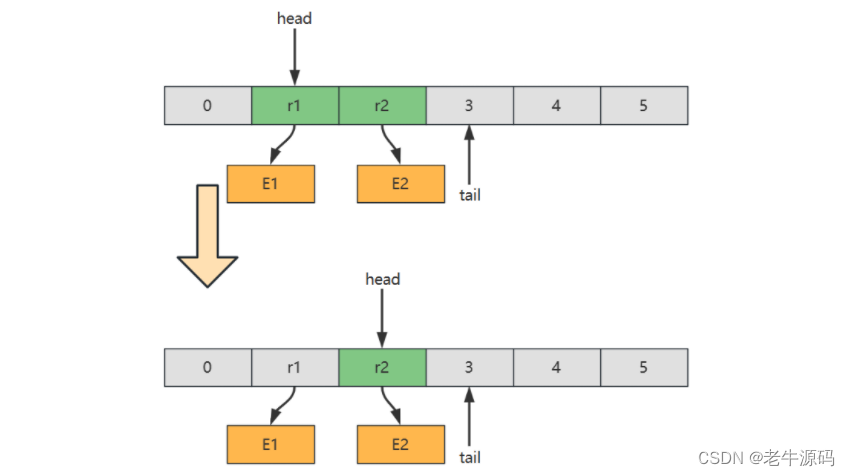
【数据结构与算法】(7)基础数据结构之双端队列的链表实现、环形数组实现示例讲解
目录 2.6 双端队列1) 概述2) 链表实现3) 数组实现习题E01. 二叉树 Z 字层序遍历-Leetcode 103 2.6 双端队列 1) 概述 双端队列、队列、栈对比 定义特点队列一端删除(头)另一端添加(尾)First In First Out栈一端删除和添加&…...

2024 高级前端面试题之 前端工程相关 「精选篇」
该内容主要整理关于 前端工程相关模块的相关面试题,其他内容面试题请移步至 「最新最全的前端面试题集锦」 查看。 前端工程相关模块精选篇 1. webpack的基本配置2. webpack高级配置3. webpack性能优化-构建速度4. webpack性能优化-产出代码(线上运行&am…...

CSS常用属性
CSS常用属性 1. 像素的概念 概念:我们的电脑屏幕是,是由一个一个“小点”组成的,每个“小点”,就是一个像素(px)。规律:像素点越小,呈现的内容就越清晰、越细腻。 注意点ÿ…...

AI新宠Arc浏览器真可以取代Chrome吗?
每周跟踪AI热点新闻动向和震撼发展 想要探索生成式人工智能的前沿进展吗?订阅我们的简报,深入解析最新的技术突破、实际应用案例和未来的趋势。与全球数同行一同,从行业内部的深度分析和实用指南中受益。不要错过这个机会,成为AI领…...

基于Java (spring-boot)的实验室管理系统
一、项目介绍 普通用户: 1.登录,注册 2.查看实验室列表信息 3.实验室预约 4.查看预约进度并取消 5.查看公告 6.订阅课程 7.实验室报修 8.修改个人信息 教师登录: 1.查看并审核预约申请 2.查看已审核预约并导出到excel 3.实验室设备管理,报修 …...
Android用setRectToRect实现Bitmap基于Matrix矩阵scale缩放RectF动画,Kotlin(一)
Android用setRectToRect实现Bitmap基于Matrix矩阵scale缩放RectF动画,Kotlin(一) 基于Matrix,控制Bitmap的setRectToRect的目标RectF的宽高。从很小的宽高开始,不断迭代增加setRectToRect的目标RectF的宽高,…...
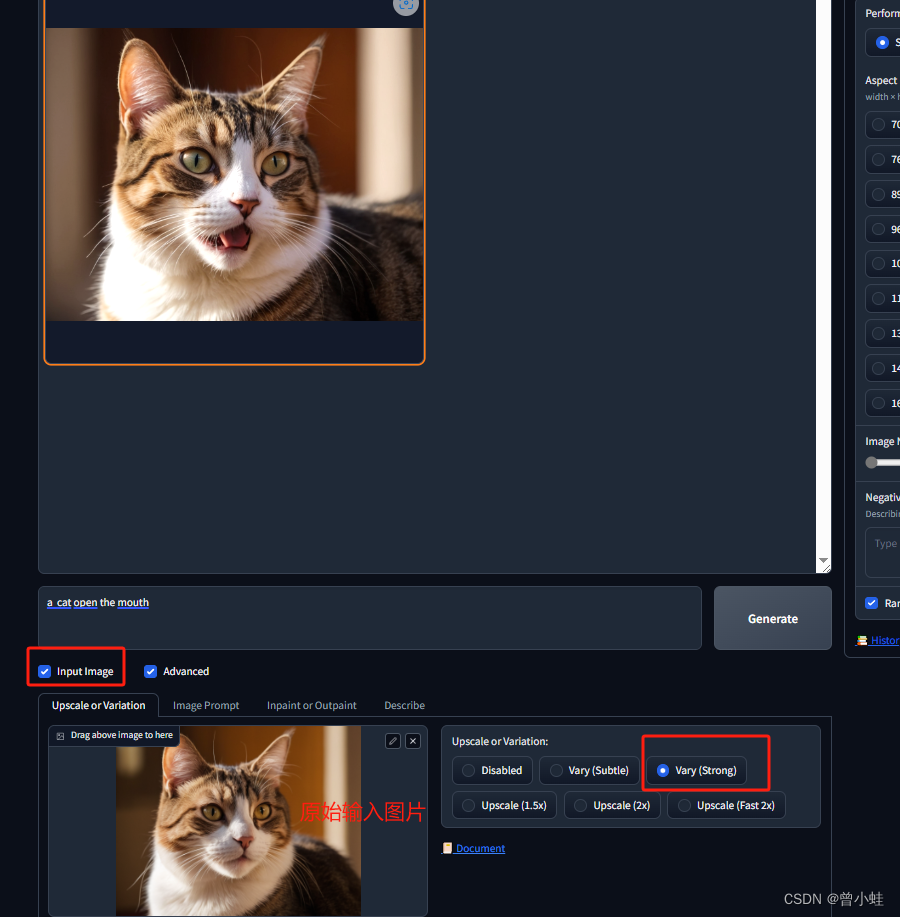
【AI绘画+Midjourney平替】Fooocus:图像生成、修改软件(Controlnet原作者重新设计的UI+Windows一键部署)
代码:https://github.com/lllyasviel/Fooocus windows一键启动包下载:https://github.com/lllyasviel/Fooocus/releases/download/release/Fooocus_win64_2-1-831.7z B站视频教程:AI绘画入门神器:Fooocus | 简化SD流程,…...
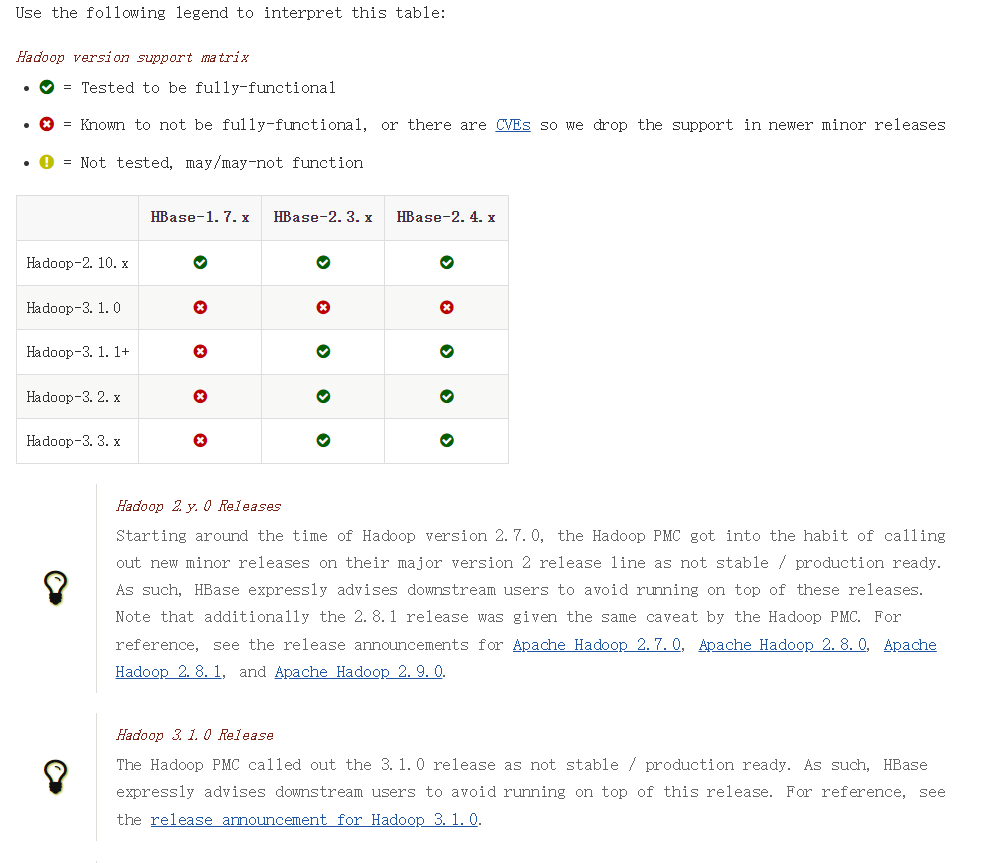
Java技术栈 —— Hive与HBase
Java技术栈 —— Hive与HBase 一、 什么是Hive与HBase二、如何使用Hive与HBase?2.1 Hive2.1.1 安装2.1.2 使用2.1.2.1 使用前准备2.1.2.2 开始使用hive 2.2 HBase2.2.1 安装2.2.2 使用 三、Apache基金会 一、 什么是Hive与HBase 见参考文章。 一、参考文章或视频链…...

【代码随想录-哈希表】有效的字母异位词
💝💝💝欢迎来到我的博客,很高兴能够在这里和您见面!希望您在这里可以感受到一份轻松愉快的氛围,不仅可以获得有趣的内容和知识,也可以畅所欲言、分享您的想法和见解。 推荐:kwan 的首页,持续学习,不断总结,共同进步,活到老学到老导航 檀越剑指大厂系列:全面总结 jav…...
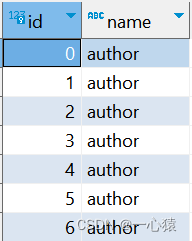
SQL Server之DML触发器
一、如何创建一个触发器呢 触发器的定义语言如下: CREATE [ OR ALTER ] TRIGGER trigger_nameon {table_name | view_name}{for | After | Instead of }[ insert, update,delete ]assql_statement从这个定义语言我们可以知道如下信息: trigger_name&…...
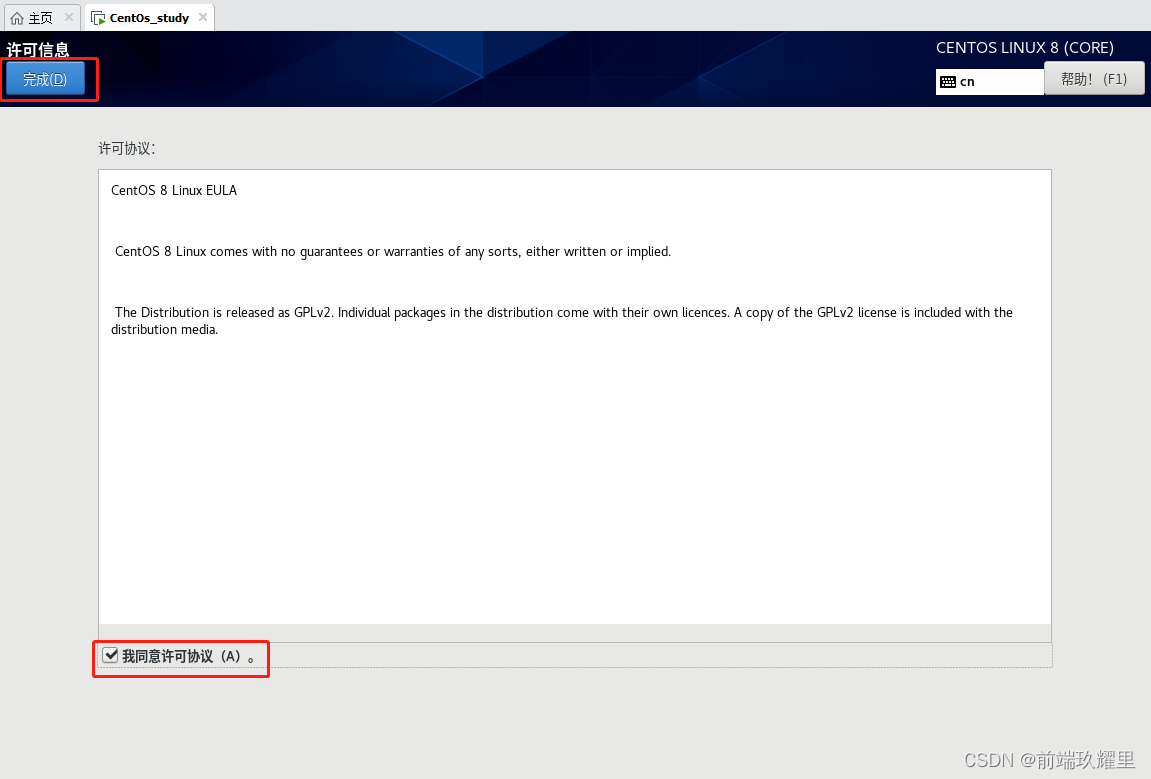
04. 【Linux教程】安装 Linux 操作系统
通过前面的小节学习,我们已经对 Linux 操作系统有了简单的了解,同时也在 Windows 下安装了虚拟机软件 VMware ,那么本节课我们就介绍下如何使用虚拟机软件安装 Linux 操作系统。 通过第一小节的学习我们知道 Linux 有很多的发行版本…...

Facebook群控:利用IP代理提高聊单效率
在当今社交媒体竞争激烈的环境中,Facebook已经成为广告营销和推广的重要平台,为了更好地利用Facebook进行推广活动,群控技术应运而生。 本文将深入探讨Facebook群控的定义、作用以及如何利用IP代理来提升群控效率,为你提供全面的…...

香港倾斜模型3DTiles数据漫游
谷歌地球全香港地区倾斜摄影数据,通过工具转换成3DTiles格式,将这份数据完美加载到三维数字地球Cesium上进行完美呈现,打造香港地区三维倾斜数据覆盖,完美呈现香港城市壮美以及维多利亚港繁荣景象。再由12.5米高分辨率地形数据&am…...
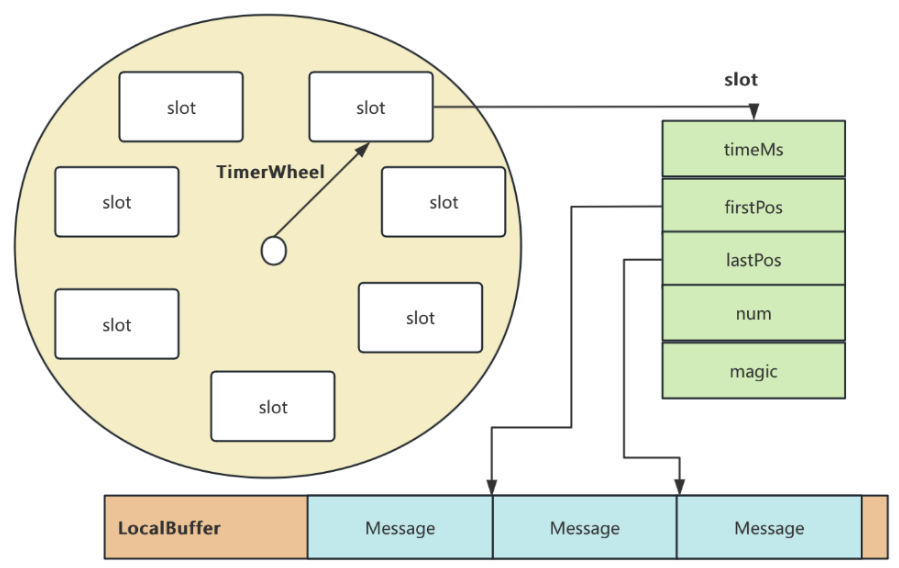
RocketMQ延迟消息机制
两种延迟消息 RocketMQ中提供了两种延迟消息机制 指定固定的延迟级别 通过在Message中设定一个MessageDelayLevel参数,对应18个预设的延迟级别指定时间点的延迟级别 通过在Message中设定一个DeliverTimeMS指定一个Long类型表示的具体时间点。到了时间点后…...

2025年能源电力系统与流体力学国际会议 (EPSFD 2025)
2025年能源电力系统与流体力学国际会议(EPSFD 2025)将于本年度在美丽的杭州盛大召开。作为全球能源、电力系统以及流体力学领域的顶级盛会,EPSFD 2025旨在为来自世界各地的科学家、工程师和研究人员提供一个展示最新研究成果、分享实践经验及…...
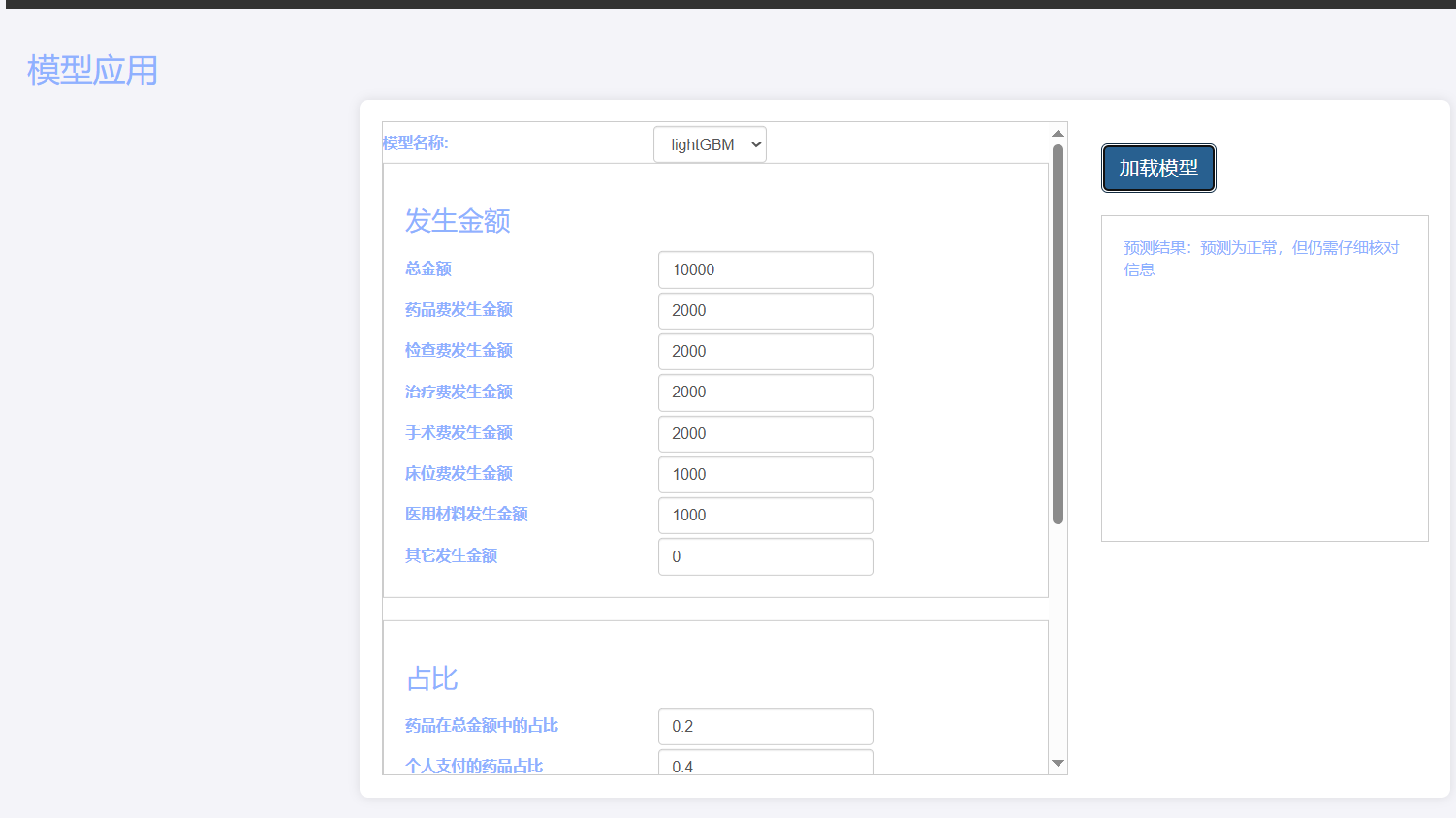
基于Flask实现的医疗保险欺诈识别监测模型
基于Flask实现的医疗保险欺诈识别监测模型 项目截图 项目简介 社会医疗保险是国家通过立法形式强制实施,由雇主和个人按一定比例缴纳保险费,建立社会医疗保险基金,支付雇员医疗费用的一种医疗保险制度, 它是促进社会文明和进步的…...

macOS多出来了:Google云端硬盘、YouTube、表格、幻灯片、Gmail、Google文档等应用
文章目录 问题现象问题原因解决办法 问题现象 macOS启动台(Launchpad)多出来了:Google云端硬盘、YouTube、表格、幻灯片、Gmail、Google文档等应用。 问题原因 很明显,都是Google家的办公全家桶。这些应用并不是通过独立安装的…...

【算法训练营Day07】字符串part1
文章目录 反转字符串反转字符串II替换数字 反转字符串 题目链接:344. 反转字符串 双指针法,两个指针的元素直接调转即可 class Solution {public void reverseString(char[] s) {int head 0;int end s.length - 1;while(head < end) {char temp …...
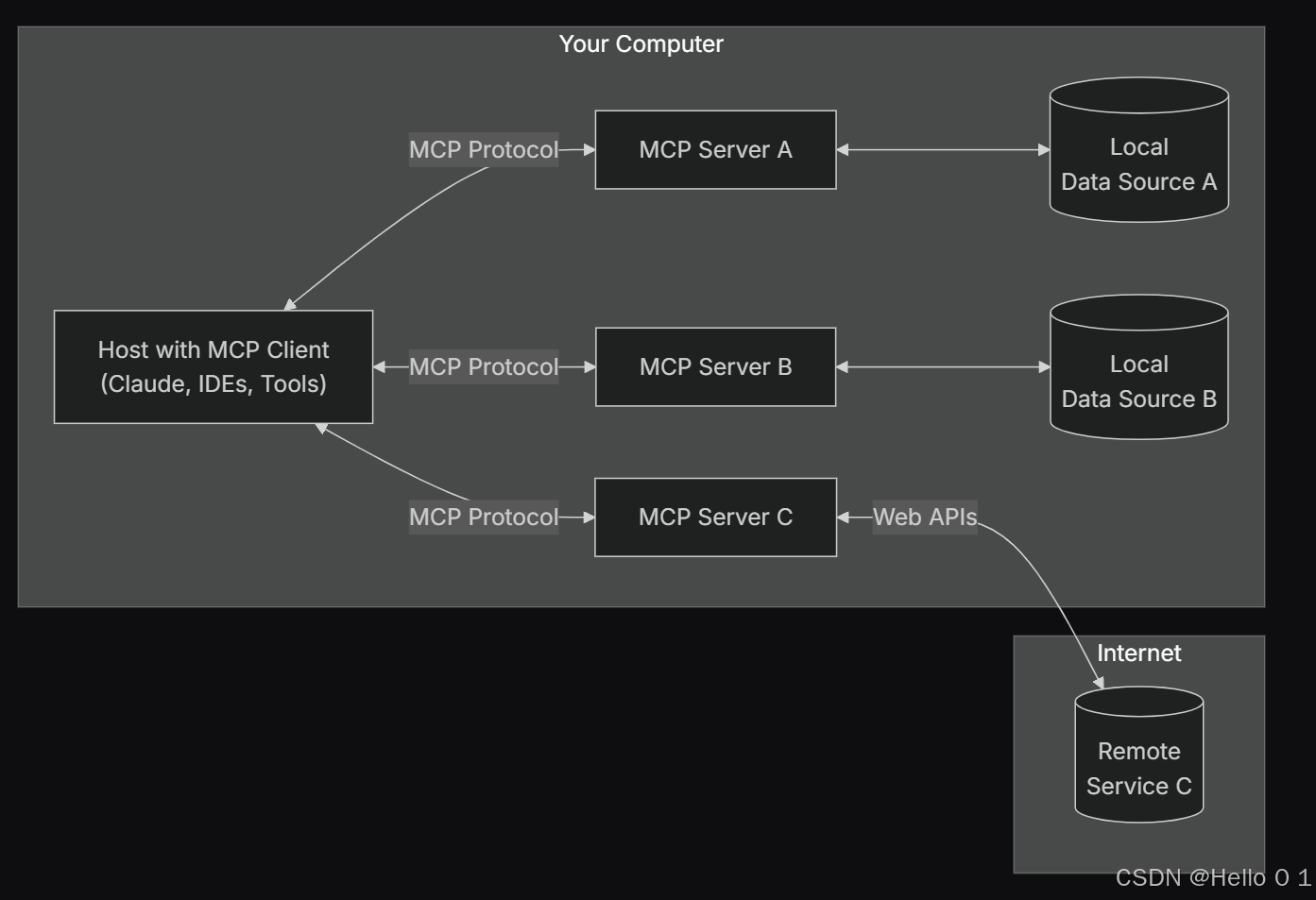
让AI看见世界:MCP协议与服务器的工作原理
让AI看见世界:MCP协议与服务器的工作原理 MCP(Model Context Protocol)是一种创新的通信协议,旨在让大型语言模型能够安全、高效地与外部资源进行交互。在AI技术快速发展的今天,MCP正成为连接AI与现实世界的重要桥梁。…...
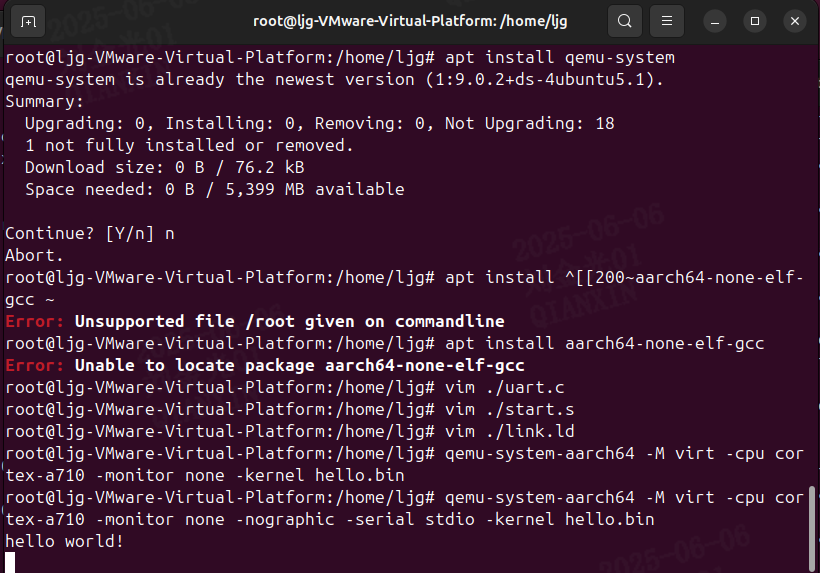
Qemu arm操作系统开发环境
使用qemu虚拟arm硬件比较合适。 步骤如下: 安装qemu apt install qemu-system安装aarch64-none-elf-gcc 需要手动下载,下载地址:https://developer.arm.com/-/media/Files/downloads/gnu/13.2.rel1/binrel/arm-gnu-toolchain-13.2.rel1-x…...

Qt 事件处理中 return 的深入解析
Qt 事件处理中 return 的深入解析 在 Qt 事件处理中,return 语句的使用是另一个关键概念,它与 event->accept()/event->ignore() 密切相关但作用不同。让我们详细分析一下它们之间的关系和工作原理。 核心区别:不同层级的事件处理 方…...
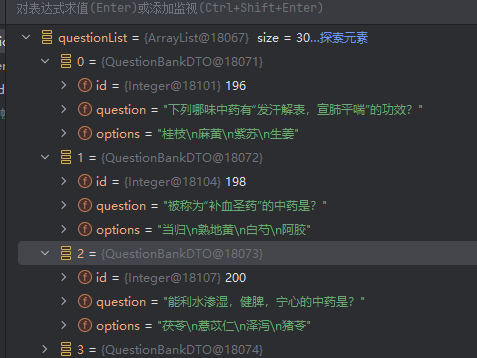
jdbc查询mysql数据库时,出现id顺序错误的情况
我在repository中的查询语句如下所示,即传入一个List<intager>的数据,返回这些id的问题列表。但是由于数据库查询时ID列表的顺序与预期不一致,会导致返回的id是从小到大排列的,但我不希望这样。 Query("SELECT NEW com…...

大模型——基于Docker+DeepSeek+Dify :搭建企业级本地私有化知识库超详细教程
基于Docker+DeepSeek+Dify :搭建企业级本地私有化知识库超详细教程 下载安装Docker Docker官网:https://www.docker.com/ 自定义Docker安装路径 Docker默认安装在C盘,大小大概2.9G,做这行最忌讳的就是安装软件全装C盘,所以我调整了下安装路径。 新建安装目录:E:\MyS…...
